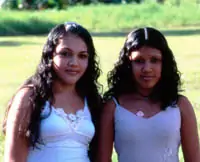The Indigenous Yucatec People
Ethnonyms: Yucateco,Yucatek,Yukatek Countries inhabited: Belize, Mexico Language family: Mayan Language branch: Yucatecan

 Yucatec is the closest living language to the original Mayan language, Proto-Mayan, that was spoken when Maya peoples first began to emerge. It began diverging from Proto-Mayan around 3,500 years ago.
It is the most widely spoken Mayan language in Mexico today with almost a million speakers. It is often simply called Mayan. In comparison, another Mayan language in the same linguistic branch, Itza, is now on the verge of extinction with only a few fluent speakers left — all of whom are very old.
Yucatec is the closest living language to the original Mayan language, Proto-Mayan, that was spoken when Maya peoples first began to emerge. It began diverging from Proto-Mayan around 3,500 years ago.
It is the most widely spoken Mayan language in Mexico today with almost a million speakers. It is often simply called Mayan. In comparison, another Mayan language in the same linguistic branch, Itza, is now on the verge of extinction with only a few fluent speakers left — all of whom are very old.
The Yucatec people were first contacted by Europeans in 1511. Three decades later the western part of the Yucatan Peninsula fell to Spanish rule. Those in the eastern region were less impacted — at first. But this was the beginning of the Spanish colonization of Mesoamerica, which eventually impacted all Maya people.

 The socio-economic system that the conquistadores put in place has been likened to the caste system found in other parts of the world such as South Asia. Mesoamerica's indigenous people became "untouchables" and the Maya of eastern Yucatan were eventually also counted among them.
The socio-economic system that the conquistadores put in place has been likened to the caste system found in other parts of the world such as South Asia. Mesoamerica's indigenous people became "untouchables" and the Maya of eastern Yucatan were eventually also counted among them.
In 1821 Mexico gained independence from Spain. A period of turmoil followed. Not a Yucatec himself (he was half Nahua and, therefore, descended from the Aztec people),
Emiliano Zapata was a key figure in the Mexican Revolution of 1910 —
 championing land reform and advocating the return of stolen land to Mexico's "untouchables."
Assassinated in 1919, Zapata remains a hero to many of Mexico's indigenous people and was the inspiration for a modern political movement, named after him, that is still active in the southeast of the country.
championing land reform and advocating the return of stolen land to Mexico's "untouchables."
Assassinated in 1919, Zapata remains a hero to many of Mexico's indigenous people and was the inspiration for a modern political movement, named after him, that is still active in the southeast of the country.
Zapata may have been partly inspired by an earlier uprising. Known as the Caste War of Yucatan, it was a revolt by the Maya of the region against the descendants of the original colonists. In 1841 Yucatan was proclaimed an independent nation. By then the region had found economic wealth through the production of natural rope that helped to begin the Industrial Revolution, as well as sugar cane. As they always have in such situations, the colonial control of wealth, the mistreatment of the workforce and the levy of taxes by the ruling class led to discontent.
 The original, colonial conquest of Yucatan was complex, bloody and prolonged: it took 200 years. Up to 90% of the indigenous population was wiped out by European diseases unknown in the New World such as smallpox, influenza, measles and tuberculosis.
The Caste War, beginning in 1847 and ending, nominally, in 1901 was in many ways a replay of the original colonial battle, but with smaller numbers on the Maya side and greater numbers on the colonial side.
The original, colonial conquest of Yucatan was complex, bloody and prolonged: it took 200 years. Up to 90% of the indigenous population was wiped out by European diseases unknown in the New World such as smallpox, influenza, measles and tuberculosis.
The Caste War, beginning in 1847 and ending, nominally, in 1901 was in many ways a replay of the original colonial battle, but with smaller numbers on the Maya side and greater numbers on the colonial side.
 It is also the last time that any Maya people claimed independence as well as the last time that Maya fought against Maya as the political and military wrangling unfolded.
It is also the last time that any Maya people claimed independence as well as the last time that Maya fought against Maya as the political and military wrangling unfolded.

It also saw one of the last migrations of Maya people in modern times: many Yucatec fled from the Caste War into neighboring Belize where their descendants still live today.
While Zapata succeeded in his political goals on a regional level only, he did influence the current Mexican Constitution. Almost 200 years after it was written, that constitution was recently translated into the Yucatec language.

 Article 27, which addresses the land reform Zapata fought for,
can now be read for the first time in one of the country's indigenous languages by the very people it sought to benefit.
Article 27, which addresses the land reform Zapata fought for,
can now be read for the first time in one of the country's indigenous languages by the very people it sought to benefit.
Today, most of us learn of the Yucatec people when we visit the "Riviera Maya" on the east coast of the Mexican Yucatan Peninsula. The ruins at Chichen Itza and Tulum are at the top of our list in between spending our days in paradise. Those who venture beyond the "canned" tourist trail can discover more about both the ancient and the modern Yucatec people.
 When I visited a school in a Yucatec village in Belize I asked a simple question of these Fifth Grade students:
"Who plans to continue their education to college level?" Every child raised their hand.
Shortly after leaving the school I met a teenaged girl who was
one of the few from the village about to accomplish that dream.
When I visited a school in a Yucatec village in Belize I asked a simple question of these Fifth Grade students:
"Who plans to continue their education to college level?" Every child raised their hand.
Shortly after leaving the school I met a teenaged girl who was
one of the few from the village about to accomplish that dream.

When I returned a few years later the school was equipped with computers and it had Internet access. In fact the overall standard of living appeared to have increased — making the chance of attending college even higher for today's students.
Photography copyright © 1999 -
2025,
Ray Waddington. All rights reserved.
Text copyright © 1999 -
2025,
The Peoples of the World Foundation. All rights reserved.

Waddington, R., (2015) The Indigenous Yucatec People. The Peoples of the World Foundation. Retrieved December 31, 2025, from The Peoples of the World Foundation. <https://www.peoplesoftheworld.org/text?people=Yucatec>
Web Links
Yucatec language resources
Once upon a myth: Exploring Yucatec Maya stories
Belize Yucatec Maya (Facebook page)
Books
Bricker, V., Po'Ot Yah, E. and Dzul De Po'Ot, O. (1998) Dictionary Of The Maya Language: As Spoken in Hocaba Yucatan. Salt Lake City, UT: University of Utah Press.
Paxton, M. (2001) The Cosmos of the Yucatec Maya: Cycles and Steps from the Madrid Codex. Albuquerque, NM: University of New Mexico Press.
Restall, M. (1999) The Maya World: Yucatec Culture and Society, 1550-1850. Redwood City, CA: Stanford University Press.


